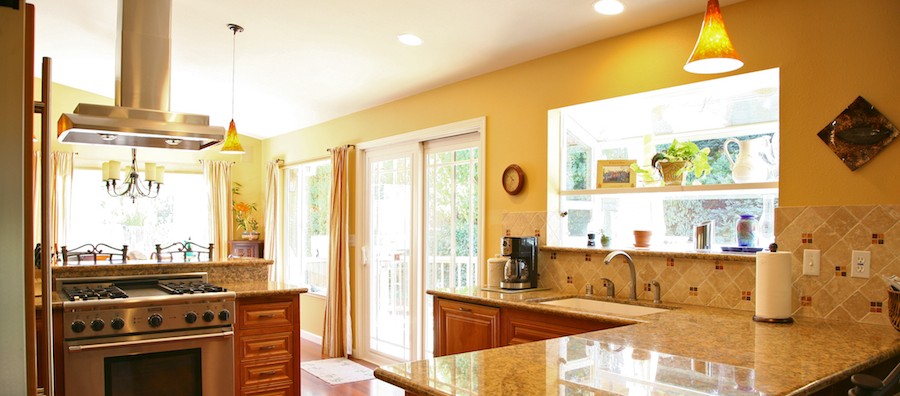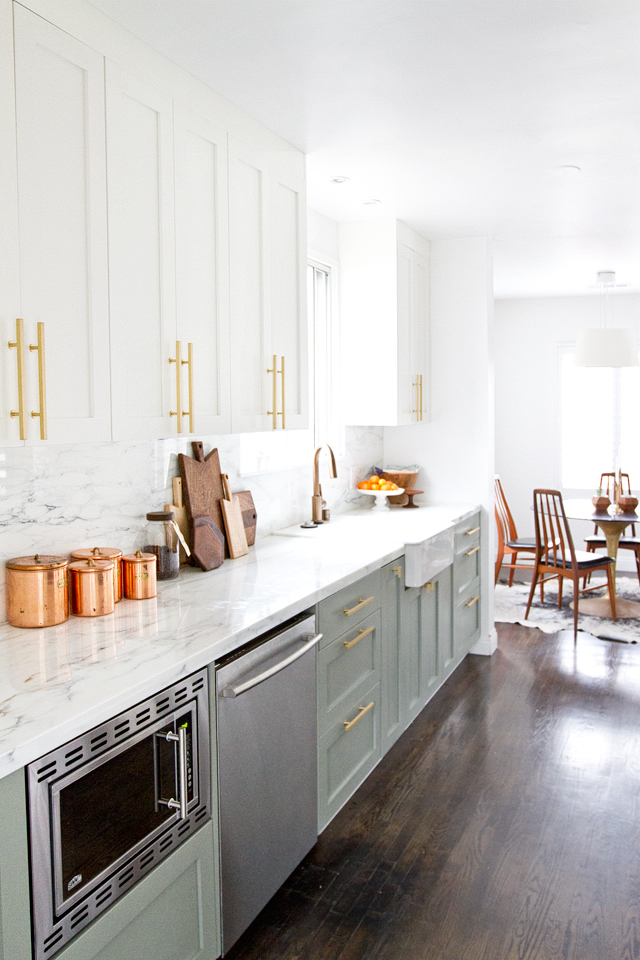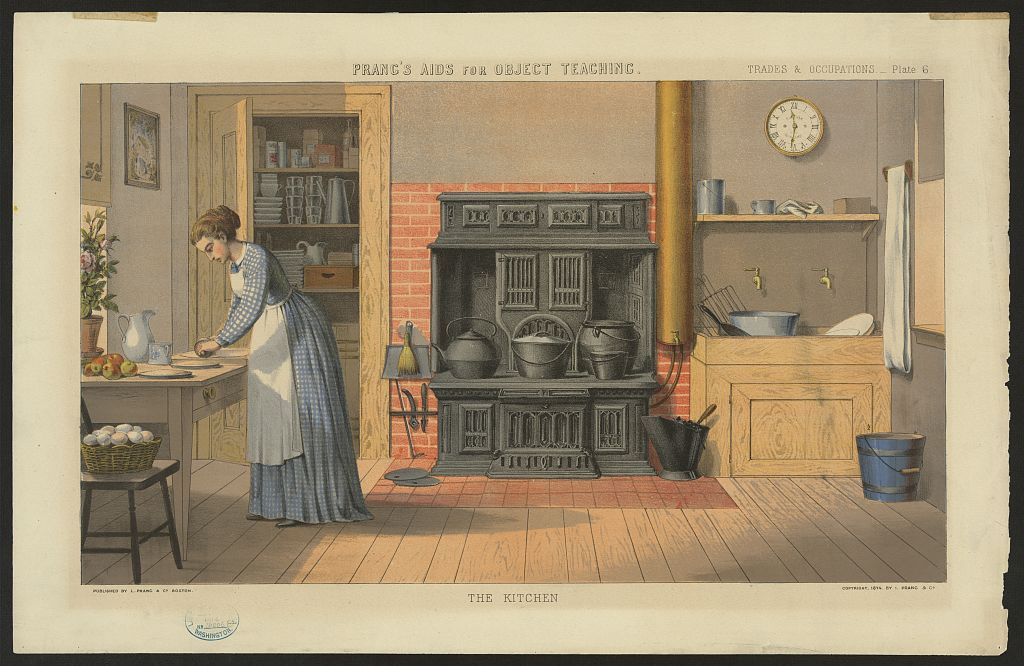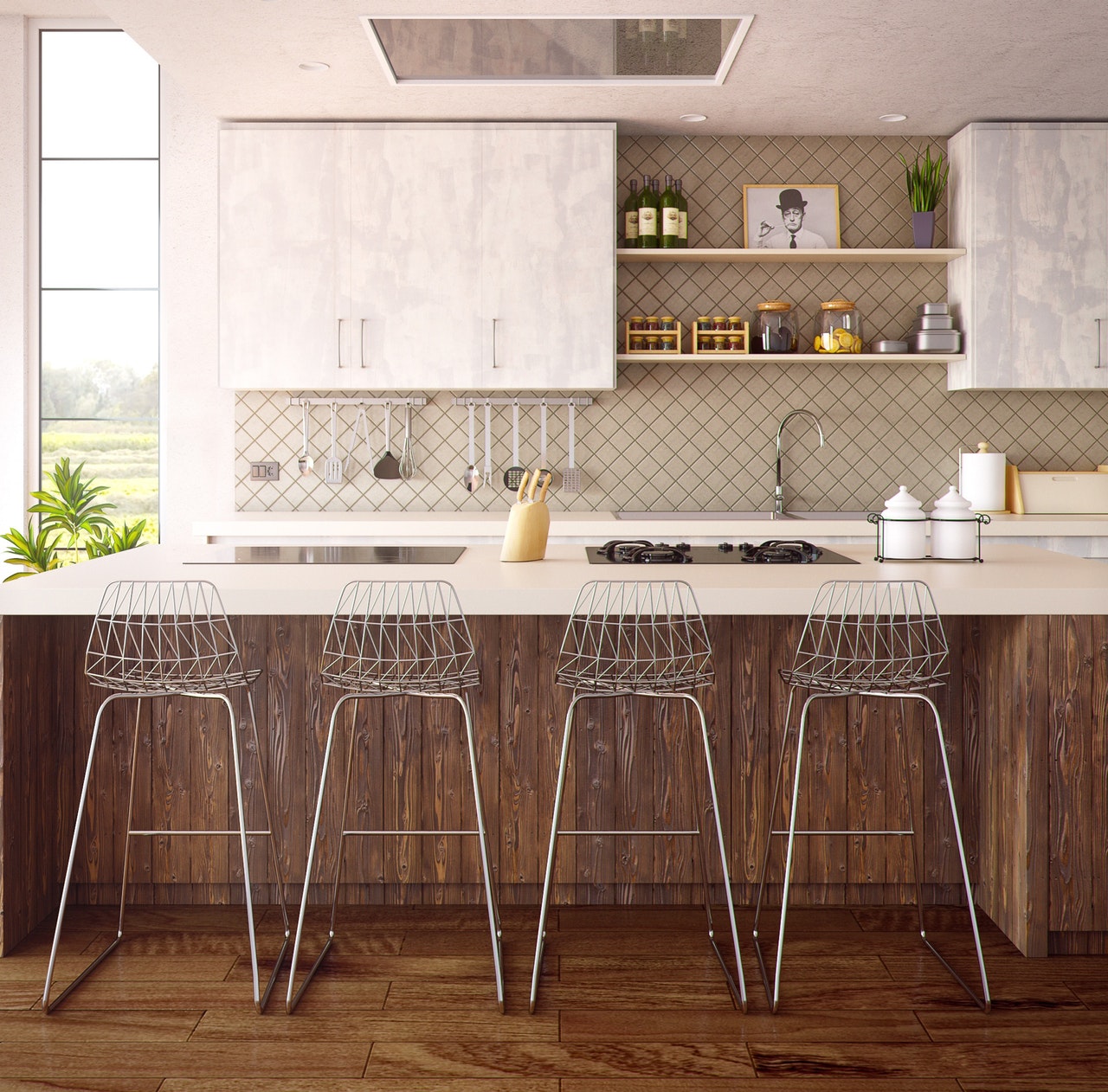When we think of “modern” kitchen features, we tend to think of things like our appliances and their ever-advancing technology, trendy materials, or open floor plans. But did you realize that our current styles of countertops have only been in use for under 100 years? They emerged from changes in how and why we use our kitchens and the ways we can furnish them.
Unlike some of the other rooms in a home, kitchens (and bathrooms) are highly designed around function. The items in a kitchen almost all have a practical role to play, from appliances to cabinets to counters and beyond. Even the “decorative” aspects like a backsplash have an important use.
The places where we prepare food have always been important, of course. However, the ways we have set up those places has varied. We moved from fires in the center of the home (or even outside) to separate rooms for cooking and preparing food. As time and technology advanced, households with servants could remove these spaces, with their noise, mess, and smells, far from the rest of the home. Households without servants put their kitchens at the back of their homes, making them accessible but certainly not featured. Later on, as the middle class grew, fewer and fewer families employed a household staff. As these people also increased their discretionary income, they had the resources available to make their cooking spaces more efficient and stylish.
For a long time, shelving, tables, free-standing cabinets, and dedicated pantries were the most common kitchen furnishings. Different pieces of furniture would have had worktops at different heights. The largest surface would likely be some sort of table. Then, in the 1930’s and 40’s and over the next several decades, kitchens began to take on a more familiar shape. They started to be set up with built-in cabinetry and appliances filling the wall space rather than scattered around. On top of those cabinets there was a perfect spot for and dedicated countertop prep space. The modern countertop was born.
Countertop materials in the past included wood, metal, tile, stone, and laminates. Newer trends also include concrete and engineered stone-based materials such as quartz. Trends have swung from small tiles to laminates to large, unbroken stretches of stone – granite being the most popular choice in recent history.
We use our kitchens as places to gather, not just to prepare food. For some of us, the kitchen is a place to relax and unleash our creativity; for others, it is a place to enjoy the fruit of someone else’s labor. We want our homes to provide a solid foundation for the type of life we want to create. Having the right materials to create a room that is pleasing to the senses as well as helpful in accomplishing our various tasks is critical for this.
The variety of available countertop materials is wide. The main choices (some less common than others) are:
Concrete
Enameled lava
Glass
Granite
Laminate
Limestone
Marble
Metal
Quartz/engineered stone
Quartzite
Resin-infused paper
Slate
Solid surface
Soapstone
Tile
Travertine
Wood
Within these there is a range of stain-resistance and scratch-resistance, both of which are important to consider in light of how you use your kitchen. If you frequently cook at home, you want a more durable material. If you entertain in your kitchen and have people around who may spill on or scratch your counters, you will also appreciate a higher durability. If you like the look of weathered, lived-in surfaces and don’t mind the process (when they will show obvious wear in some areas but not others), you may want a material that easily develops a patina. If you prefer to spend as little time as possible in the kitchen, you can find something low-maintenance. If you enjoy spending a lot of time in that space and don’t mind taking special care, your options will change. An easy-to-read list of pros and cons of many options is available from Apartment Therapy.
What we need for our kitchens varies from person to person. As you evaluate your needs and preferences, it will help you narrow down your search for the best material for your space. And next time you go into your kitchen, take a minute to appreciate the less-obvious technological improvements that save time and effort like your built-in countertops.




